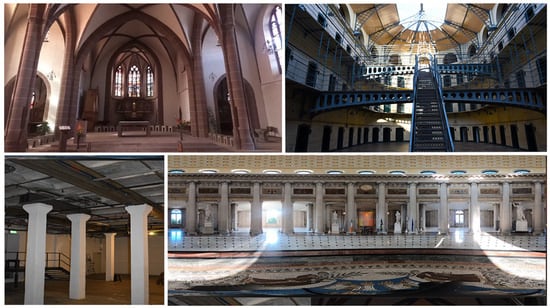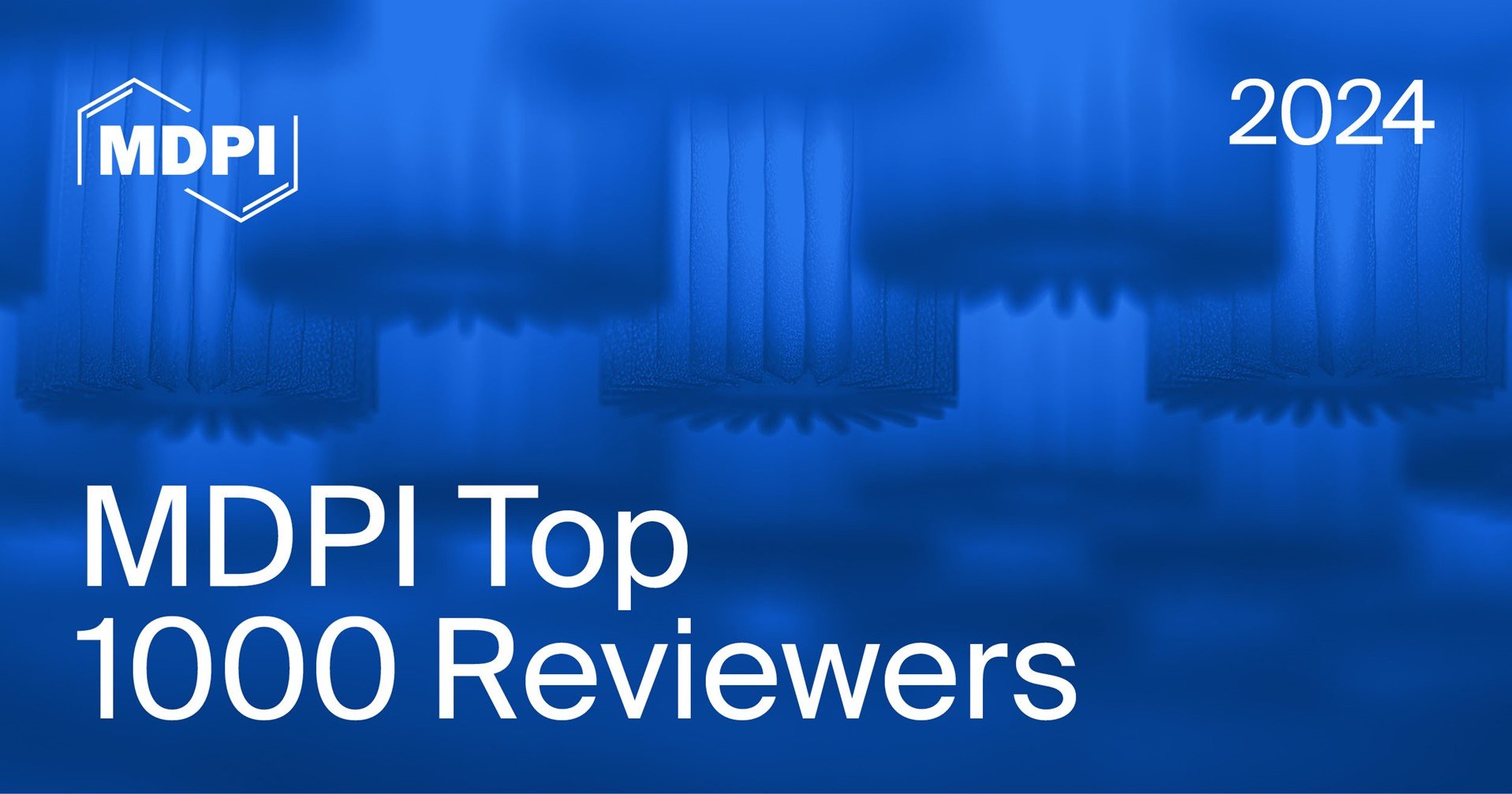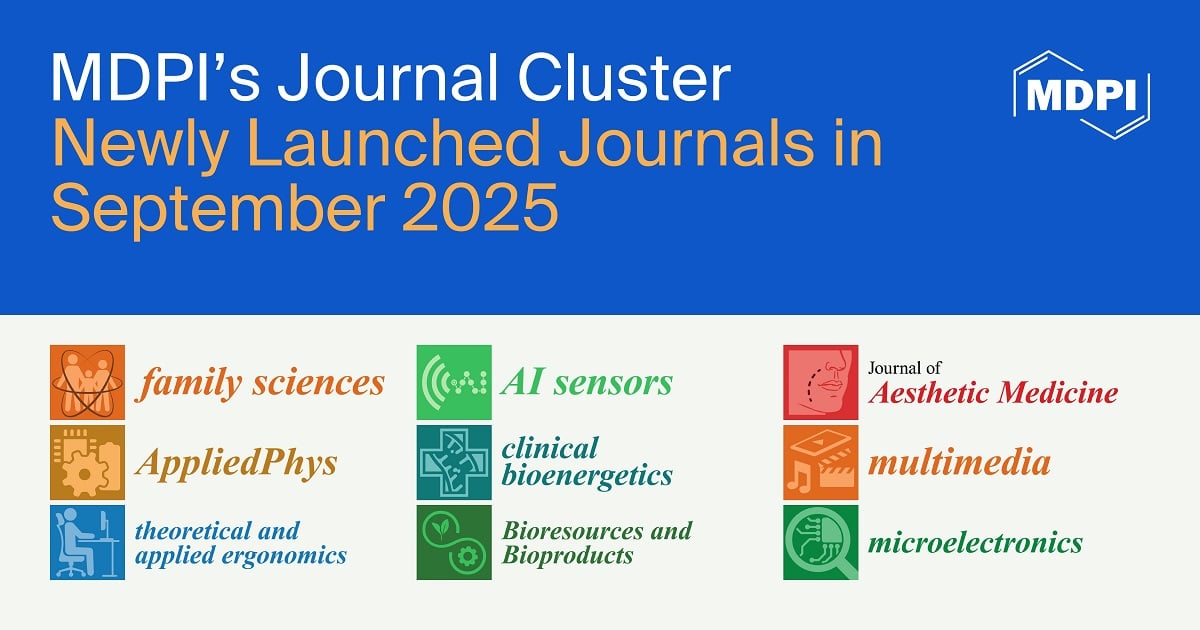-
 The Legacy of Helga de Alvear: The Gallery, the Collection, the Museum—A Curatorial and Museographic Approach
The Legacy of Helga de Alvear: The Gallery, the Collection, the Museum—A Curatorial and Museographic Approach -
 Saltatory Spectacles: (Pre)Colonialism, Travel, and Ancestral Lyric in the Middle Ages and Raymonda
Saltatory Spectacles: (Pre)Colonialism, Travel, and Ancestral Lyric in the Middle Ages and Raymonda -
 “I Wanna See It Boil”: Satire as Eco-Political Performance in Talking Heads’s “(Nothing But) Flowers” (1988) and Anohni’s “4 Degrees” (2015)
“I Wanna See It Boil”: Satire as Eco-Political Performance in Talking Heads’s “(Nothing But) Flowers” (1988) and Anohni’s “4 Degrees” (2015) -
 The Buades Gallery: A Tube of Oil Paint Open to the World Mercedes Buades and Her Support for Spanish Conceptualism, 1973–1978
The Buades Gallery: A Tube of Oil Paint Open to the World Mercedes Buades and Her Support for Spanish Conceptualism, 1973–1978
Journal Description
Arts
Arts
is an international, peer-reviewed, open access journal promoting significant research on all aspects of the visual and performing arts, published bimonthly online by MDPI.
- Open Access— free for readers, with article processing charges (APC) paid by authors or their institutions.
- High Visibility: indexed within ESCI (Web of Science), and other databases.
- Rapid Publication: manuscripts are peer-reviewed and a first decision is provided to authors approximately 37.3 days after submission; acceptance to publication is undertaken in 6.8 days (median values for papers published in this journal in the first half of 2025).
- Recognition of Reviewers: reviewers who provide timely, thorough peer-review reports receive vouchers entitling them to a discount on the APC of their next publication in any MDPI journal, in appreciation of the work done.
Impact Factor:
0.3 (2024)
Latest Articles
Antiphonal to Ambisonics: A Practice-Based Investigation of Spatial Choral Composition Through Built Environment Materiality
Arts 2025, 14(6), 135; https://doi.org/10.3390/arts14060135 - 4 Nov 2025
Abstract
This paper presents Macalla, a practice-based research project investigating how architectural spaces function as co-creative instruments in Ambisonic choral composition. Comprising four original compositions, Macalla employed Nelson’s praxis model, integrating creative practice with critical reflection through iterative cycles of composition, anechoic vocal
[...] Read more.
This paper presents Macalla, a practice-based research project investigating how architectural spaces function as co-creative instruments in Ambisonic choral composition. Comprising four original compositions, Macalla employed Nelson’s praxis model, integrating creative practice with critical reflection through iterative cycles of composition, anechoic vocal recording, and site-specific re-recording. The project explored six contrasting architecturally significant spaces including a gaol, churches, and civic offices. Using a stop-motion stem playback methodology, studio-recorded vocals were reintroduced to architectural spaces, revealing emergent sonic properties that challenged compositional intentions and generated new musical possibilities. The resulting Ambisonic works were disseminated through multiple formats including VR/360 video via YouTube, Octophonic concert performance, and immersive headphone experiences to maximize accessibility. Analysis of listener behaviours identified distinct engagement patterns, seekers actively hunting optimal positions and dwellers settling into meditative reception, suggesting spatial compositions contain multiple potential works activated through listener choice. The project contributes empirical evidence of acoustic agency, with documented sonic transformations demonstrating that architectural spaces actively participate in composition rather than passively containing it. This research offers methodological frameworks for site-specific spatial audio creation while advancing understanding of how Ambisonic technology can transform the composer-performer-listener relationship in contemporary musical practice.
Full article
(This article belongs to the Special Issue Creating Musical Experiences)
►
Show Figures
Open AccessArticle
Sexualising the Erotic—Marco Polo’s Gaze Distorting Our Understanding of Religious Dances
by
Laura Hellsten
Arts 2025, 14(6), 134; https://doi.org/10.3390/arts14060134 - 1 Nov 2025
Abstract
This article commences from a transdisciplinary research setting where students, artists, activists, and researchers come together to investigate medieval travelling accounts. The article is structured in two main parts. The first part presents an exploration of the theoretical framework of an hermeneutics of
[...] Read more.
This article commences from a transdisciplinary research setting where students, artists, activists, and researchers come together to investigate medieval travelling accounts. The article is structured in two main parts. The first part presents an exploration of the theoretical framework of an hermeneutics of charity and suspicion as well as a development of a methodology that probes at the “cracks” of colonial pedagogical and scholarly structures. In the second part, the article uses critical inquiry and shared learning experiences to examine Marco Polo’s The Travels, focusing on his descriptions of dancing. Specifically, it investigates what Polo’s text conveyed—and omitted—about the relationship between intimacy, eroticism, and dance for a European audience. Combining auto-ethnographic reflections with stories from the communal learning process, the article invites readers to consider how collective inquiry reshapes our understanding of historical texts. In addition to questioning Polo/Rustichello’s portrayal of religious dance through his mercantile and sexualised gaze, the author also challenges some previous scholarly interpretations of Polo as an agent of European colonial endeavours. Finally, the paper offers a method for rethinking how researchers approach dance and university education, as well as practical tools for how historical accounts can be explored in a way that prevents discernment from overshadowing what can be gained from attunement.
Full article
(This article belongs to the Special Issue Artistic Imagination and Social Imaginaries–Polysemous Readings of Historical Travelling Accounts)
►▼
Show Figures

Figure 1
Open AccessArticle
Melomaniacs: How Independent Musicians Influence West Hollywood’s Cosmopolitanism
by
Caroline E. Nagy
Arts 2025, 14(6), 133; https://doi.org/10.3390/arts14060133 - 31 Oct 2025
Abstract
This article brackets the sociology of music and urban arts by exploring how independent musicians derive creative meaning and connections within the musically diverse place of West Hollywood, CA (WeHo), and describes the existing municipal conditions that enable professional musicians to experience their
[...] Read more.
This article brackets the sociology of music and urban arts by exploring how independent musicians derive creative meaning and connections within the musically diverse place of West Hollywood, CA (WeHo), and describes the existing municipal conditions that enable professional musicians to experience their career trajectories as authentic to their selves. Findings from in-depth interviews and ethnographic observations with 23 local, professional musicians emphasize (i) the artists’ authentic expression through innate musicality and live performances; (ii) feelings of acceptance and validation from connections to culturally hybrid audiences; and (iii) appreciation for the city’s diverse musical stages with storied histories. In further analyses, original insights are generated into how musicians continue influencing WeHo’s cosmopolitanism through their cultural omnivore attitudes and postmaterialist lifestyles. I conclude that the interconnectedness between these independent musicians and the structure of West Hollywood coevolves moral capital, contributing to a more legitimate and musically equitable urban space for artists to be recognized.
Full article
(This article belongs to the Special Issue The Arts and Urban Development)
►▼
Show Figures

Graphical abstract
Open AccessArticle
To Hell with Devotion: Buddhism in Senjafuda
by
Glynne Walley
Arts 2025, 14(6), 132; https://doi.org/10.3390/arts14060132 - 31 Oct 2025
Abstract
This article concerns nōsatsu, also known in Japanese as senjafuda and generally known as “votive slips” in English. Nōsatsu emerged in the 18th century out of popular practices related to pilgrimage in the city of Edo. Nōsatsu practitioners who visited Buddhist temples
[...] Read more.
This article concerns nōsatsu, also known in Japanese as senjafuda and generally known as “votive slips” in English. Nōsatsu emerged in the 18th century out of popular practices related to pilgrimage in the city of Edo. Nōsatsu practitioners who visited Buddhist temples or Shinto shrines would paste votive slips on walls or other surfaces in the belief that the pasted slip would function as a proxy for the pilgrim, continuing in prayer vigil after the pilgrim had left. Practitioners persisted in their pasting activities in the face of opposition from temples and shrines. Later, nōsatsu evolved into full-color pictorial woodblock prints meant for exchanging and collecting, rather than pasting, but the early history of pilgrimage, proxy devotion, and institutional resistance remained in both the memories of the practitioners and the iconography of the slips themselves. Through close visual analysis of several slips depicting Buddhist themes, this article will describe the attitude of transgressive devotion that characterizes nōsatsu culture.
Full article
(This article belongs to the Special Issue Japanese Buddhist Art of the 19th–21st Centuries)
►▼
Show Figures

Figure 1
Open AccessArticle
The Representation of Women as the Source of Evil: The Evolution of the Witch Figure
by
Andrea Fernández Pastor
Arts 2025, 14(6), 131; https://doi.org/10.3390/arts14060131 - 29 Oct 2025
Abstract
►▼
Show Figures
This text presents a sociological approach to the historical role that the figure of the witch has played and continues to play. Omnipresent in mythology and art, it is hardly surprising that fashion and cinema have drawn upon her as both a source
[...] Read more.
This text presents a sociological approach to the historical role that the figure of the witch has played and continues to play. Omnipresent in mythology and art, it is hardly surprising that fashion and cinema have drawn upon her as both a source of inspiration and a mirror of contemporary society. Both the catwalk and the screen have underscored the relevance of black in her attire, establishing a direct association between sombre garments and sorcery. It is inconceivable, for instance, to imagine a witch costume without certain accessories such as the hat or the broom. Yet a question arises: should we remain faithful to this imaginary, reinforced over centuries by recurring iconographic elements, or should we reconsider and deconstruct it? Accordingly, the objectives proposed here are, on the one hand, to historicise the concept of the witch as a social construct, with women erected as the embodiment of evil, and, on the other hand, to examine the role of clothing in reinforcing this construct through an exploration of the principal tendencies in fashion shows and the significance of costume design in fantastic and horror cinema.
Full article
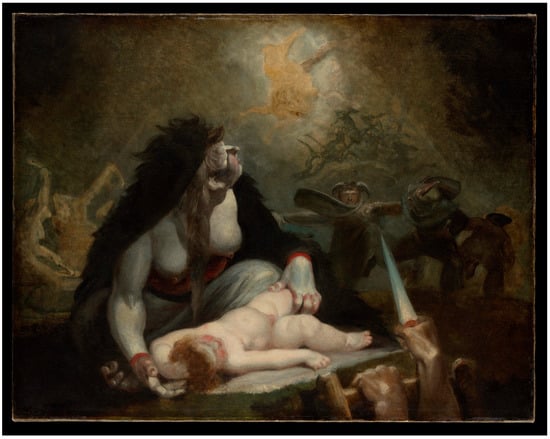
Figure 1
Open AccessArticle
Tracing Images, Shaping Narratives: Eight Decades of Rock Art Research in Chile, South America (1944–2024)
by
Daniela Valenzuela, Indira Montt, Marcela Sepúlveda and Persis B. Clarkson
Arts 2025, 14(6), 130; https://doi.org/10.3390/arts14060130 - 28 Oct 2025
Abstract
80 years of Chilean rock art research, from its early descriptive stages in the 1940s to the present-day integration of relational ontologies, archaeometric techniques, and interdisciplinary perspectives, is reviewed. 562 publications are analysed, covering four major regions: the Arid North, Semi-Arid North, South-Central,
[...] Read more.
80 years of Chilean rock art research, from its early descriptive stages in the 1940s to the present-day integration of relational ontologies, archaeometric techniques, and interdisciplinary perspectives, is reviewed. 562 publications are analysed, covering four major regions: the Arid North, Semi-Arid North, South-Central, and Southernmost Chile. Drawing from a systematically constructed corpus, we trace the evolution of research questions, theoretical orientations, and methodologies over time, with attention to regional trends and institutional dynamics. Results reveal a gradual shift from typological classification toward more complex approaches addressing mobility, landscape, coloniality, visual agency, and human/non-human relationships. The Arid North emerges as the primary centre of innovation, while southern regions remain in exploratory stages despite recent advances. Comparison with global research trajectories shows how Chile’s situated approaches—marked by decentralisation, theoretical pluralism, and critical reflection—contribute to decolonial and southern perspectives in rock art studies. Rather than reproducing hegemonic models, Chilean scholarship offers alternative epistemologies rooted in context-specific materiality and historical processes. The review highlights the potential of Chilean rock art research to expand the theoretical and methodological horizons of the discipline, positioning it as a fertile field for dialogue with contemporary archaeology and global visual studies.
Full article
(This article belongs to the Special Issue Advances in Rock Art Studies)
►▼
Show Figures
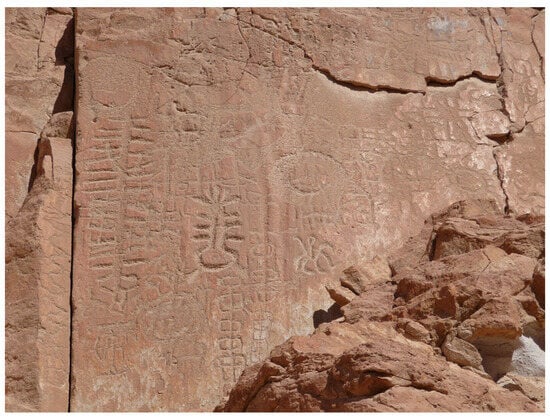
Figure 1
Open AccessArticle
The “Invisible” Heritage of Women in NeSpoon’s Lace Murals: A Symbolic and Educational Three-Case Study
by
Elżbieta Perzycka-Borowska, Lidia Marek, Kalina Kukielko and Anna Watola
Arts 2025, 14(6), 129; https://doi.org/10.3390/arts14060129 - 27 Oct 2025
Abstract
Street art increasingly reshapes aesthetic hierarchies by introducing previously marginalised media into the public sphere. A compelling example is the artistic practice of the Polish artist NeSpoon (Elżbieta Dymna), whose work merges the visual language of traditional lace with the communicative strategies of
[...] Read more.
Street art increasingly reshapes aesthetic hierarchies by introducing previously marginalised media into the public sphere. A compelling example is the artistic practice of the Polish artist NeSpoon (Elżbieta Dymna), whose work merges the visual language of traditional lace with the communicative strategies of contemporary urban art. Active since the late 2000s, NeSpoon combines stencils, ceramic lace imprints, and large-scale murals to translate the intimacy of handcraft into the visibility of public space. Her works function as both aesthetic interventions and acts of civic pedagogy. This study employs a qualitative visual research design combining multi-site digital inquiry, iconological and semiotic analysis, and mini focus group (N = 22). Three purposefully selected cases: Łódź, Belorado, and Fundão, were examined to capture the site-specific and cultural variability of lace murals across Europe. The analysis demonstrates that lace functions as an agent of cultural negotiation and a medium of heritage literacy, understood here as embodied and place-based learning. In Łódź, it monumentalises textile memory and women’s labour embedded in the city’s industrial palimpsest. In Belorado, micro-scale responsiveness operates, strengthening the local semiosphere. In Fundão, lace enters an intermedial dialogue with azulejos, negotiating the boundary between craft and art while expanding local visual grammars. The study introduces the conceptualisation of the monumentalisation of intimacy in public art and frames heritage literacy as an embodied, dialogic, and community-oriented educational practice. Its implications extend to feminist art history, place-based pedagogy, urban cultural policy, and the preventive conservation of murals. The research elucidates how domestic craft once confined to the private interior operates in public space as a medium of memory, care, and inclusive aesthetics.
Full article
(This article belongs to the Section Visual Arts)
►▼
Show Figures

Figure 1
Open AccessArticle
Porcelain, Power, and Identity: The Global Life of Chinese Armorial Ware in the Eighteenth Century
by
Qi Zhou
Arts 2025, 14(6), 128; https://doi.org/10.3390/arts14060128 - 24 Oct 2025
Abstract
►▼
Show Figures
The eighteenth century marked a peak period of globalization, during which Chinese porcelain emerged as a pivotal commodity in global material culture. This study focuses on a distinctive category, Chinese armorial porcelain, as a transcultural and hybridity artefact exchanged between High Qing China
[...] Read more.
The eighteenth century marked a peak period of globalization, during which Chinese porcelain emerged as a pivotal commodity in global material culture. This study focuses on a distinctive category, Chinese armorial porcelain, as a transcultural and hybridity artefact exchanged between High Qing China and Britain. Drawing on a multidisciplinary approach that combines close visual analysis with theoretical insights from material culture studies, postcolonial theory and consumer sociology, this study examines the evolving design language of these hybrid wares. It offers, for the first time, a systematic typology of Chinese decorative patterns on armorial porcelain and traces their compositional shifts over time. The analysis reveals a gradual Europeanization of these objects, corresponding to changing European perceptions of China—from a space of cultural fascination to a subordinated Orientalist otherness. At the same time, these porcelains register significant shifts in British social values, taste hierarchies, and consumption practices. Crucially, this study foregrounds the role of Chinese patterns, long treated as peripheral, as active agents in visual and cultural negotiation.
Full article
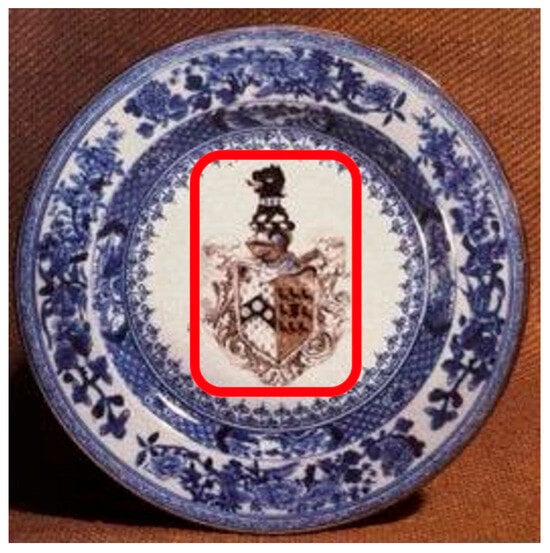
Figure 1
Open AccessArticle
Building Shared Histories: Dioramas, Architectural Models, Collaboration, and Transatlantic African American Spaces, 1900–1940
by
Emily C. Burns
Arts 2025, 14(6), 127; https://doi.org/10.3390/arts14060127 - 23 Oct 2025
Abstract
Between 1900 and 1940, African American participants in transatlantic public exhibitions reclaimed a medium that often oppressed non-White bodies: the diorama. This essay traces a transatlantic conversation among African American artists about how to render Black history in diorama form, leveraging the miniature
[...] Read more.
Between 1900 and 1940, African American participants in transatlantic public exhibitions reclaimed a medium that often oppressed non-White bodies: the diorama. This essay traces a transatlantic conversation among African American artists about how to render Black history in diorama form, leveraging the miniature format to make political arguments. In diorama series which circulated on both sides of the Atlantic, such as those designed by Thomas W. Hunster for the Exhibit of American Negroes in the Paris Universal Exposition in 1900 and the Pan-American Exposition in 1901, Meta Vaux Warrick Fuller for the Jamestown Ter-Centennial Exposition in 1907, and Charles C. Dawson for the American Negro Exposition in Chicago in 1940, African American makers selectively used architectural models to signify histories of oppression and liberation as they told transatlantic stories about Black migration and enslavement. This essay argues that this set of dioramas is entwined, growing from 9 to 14 to 33, and that Hunster, Fuller, and Dawson all rendered archetypal buildings, such as slave cabins or plantation homes, to designate the wide and encompassing scope of oppression, while they reference singular buildings associated with public institutions from government to universities—the M Street School in Washington DC, Carnegie Library at Howard University, Mother Bethel AME Church in Philadelphia, the Old Massachusetts State House, and the White House—to signify and emplace spaces of Black liberation. Building on research on the layered functions of miniatures and drawing on burgeoning scholarship on entwinements between race and architecture, the article speculates on how architecture style signifies through the models to reinforce what James C. Scott has parsed as dominant narratives and hidden transcripts. Seeking to build Black futurity, all three series facilitated community participation and collaboration to produce an intersocial construction of transatlantic African American history built through mobile models of architecture.
Full article
(This article belongs to the Special Issue Black Artists in the Atlantic World)
►▼
Show Figures
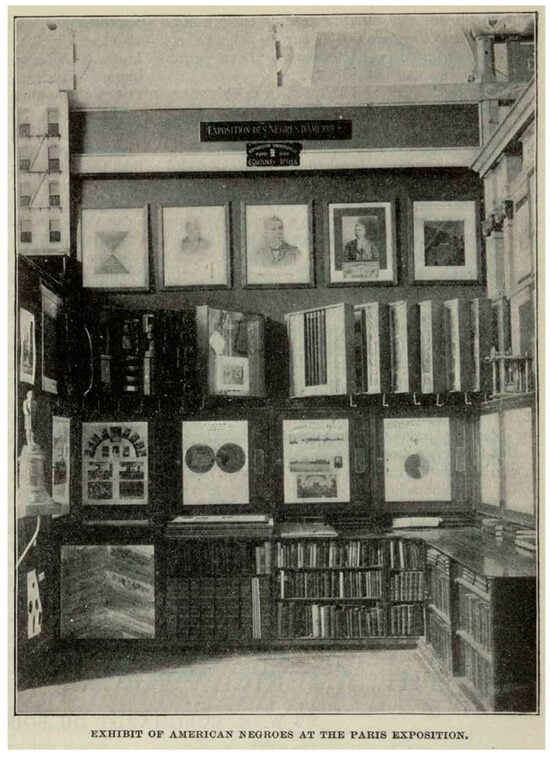
Figure 1
Open AccessArticle
Curating Spaces of Confrontation: African Artists at the Mega-Shows of Contemporary Art in 2017–2025: Documenta, Berlin Biennale, Manifesta, La Biennale di Venezia
by
Krzysztof Siatka
Arts 2025, 14(6), 126; https://doi.org/10.3390/arts14060126 - 22 Oct 2025
Abstract
The recent years have seen a significantly increased representation of African artists at major recurring shows of contemporary art. This paper looks at works featured in the past few editions of La Biennale di Venezia, Kassel’s documenta, Berlin Biennale, and the European Nomadic
[...] Read more.
The recent years have seen a significantly increased representation of African artists at major recurring shows of contemporary art. This paper looks at works featured in the past few editions of La Biennale di Venezia, Kassel’s documenta, Berlin Biennale, and the European Nomadic Biennial Manifesta—events that once stemmed from civilisational transformations and now function as influential art institutions. The way these are organised leaves room for art which deals with pressing, difficult matters; especially our relationship with the Global South is becoming a major concern. Africa’s output is unlike all traditional forms of Western culture, and its most interesting instances are participatory, socially contextualised, and utilitarian; colonial crimes and trauma count among vital subjects. At the same time, various uncompromising approaches challenge our notions about how to conceive of an exhibition and how an art institution should operate: works of art are no longer fetishised simply as appealing manifestations of an unfamiliar aesthetic. Consequently, the art world has no other choice but to adjust the programming of its initiatives, shows, and organisations so that space is made for endeavours firmly rooted in the present day, actually facing its challenges.
Full article
(This article belongs to the Special Issue Restitution Beyond Repatriation: Rethinking African Tangible Heritage in Twenty-First Century Museums)
►▼
Show Figures

Figure 1
Open AccessArticle
Royal Ideology and Elite Integration in Theban Tombs as Precursors to the Amarna Period
by
Melinda K. Hartwig
Arts 2025, 14(5), 125; https://doi.org/10.3390/arts14050125 - 20 Oct 2025
Abstract
This paper will examine how tomb chapel imagery changed to depict a state of being that marked a theological and cultural shift during the reigns of Thutmose IV and Amenhotep III. The iconography of the royal kiosk scene reflects the growing influence of
[...] Read more.
This paper will examine how tomb chapel imagery changed to depict a state of being that marked a theological and cultural shift during the reigns of Thutmose IV and Amenhotep III. The iconography of the royal kiosk scene reflects the growing influence of solar theology. At the same time, the king, as the mediator between the gods and humanity, appears as the primary source of the tomb owner’s well-being in the afterlife. Scenes of family life give way to depictions illustrating the tomb owner’s official role in relation to the king. Likewise, many of the so-called innovations in Amarna tomb decoration are already evident, such as the depiction of locality and specificity, setting and action, emotion, and the spontaneity of the here-and-now. At this time in the tomb’s transverse halls and porticos, the king dominates the decoration in the public areas of the chapel, along with depictions of the deceased’s service to him. Family images are gradually relegated to the inner hall of tombs, becoming almost non-existent by the late reign of Amenhotep III. By the reign of his son, all tomb scenes became oriented towards Akhenaten, who alone would provide, along with the Aten, for the deceased’s cult, career, social identity, and eternal survival.
Full article
(This article belongs to the Special Issue Ancient Egyptian Art Studies: Art in Motion, a Social Tool of Power and Resistance)
►▼
Show Figures

Figure 1
Open AccessReview
Unlearning the Colonial Gaze: Grada Kilomba and the Poetics of Disobedience
by
Luciana da Costa Dias
Arts 2025, 14(5), 124; https://doi.org/10.3390/arts14050124 - 20 Oct 2025
Abstract
►▼
Show Figures
Since the mid-twentieth century, a profound reconfiguration of the epistemic ground of ‘art’ itself—aesthetic theory—has taken place. This review examines how modern logic and the inseparability of the modernity/coloniality pair have impacted aesthetic thought, revisiting traditional aesthetics through the concept of a decolonial
[...] Read more.
Since the mid-twentieth century, a profound reconfiguration of the epistemic ground of ‘art’ itself—aesthetic theory—has taken place. This review examines how modern logic and the inseparability of the modernity/coloniality pair have impacted aesthetic thought, revisiting traditional aesthetics through the concept of a decolonial aisthesis. Methodologically, it mobilises a bibliographic review of decolonial thought in dialogue with feminist theory and undertakes a case-based analysis of Grada Kilomba’s exhibition Poetic Disobediences (2019). This review also forms part of a larger research project on decolonial aisthesis, feminisms, and performance art, with results disseminated in various contexts. Distinctively, it foregrounds Kilomba’s installation The Dictionary (2019) as a central case study, emphasising how it dismantles the grammar of “healing” through language and performance and exploring its implications through the lens of Latina and Black feminisms. The results highlight the need to critically rethink aesthetics: if aesthetics is a modern and thus colonial construct, it must be unlearned and reimagined from within. The review concludes that poetic and epistemic disobedience emerge as insurgent gestures capable of destabilising coloniality in art, pointing not to the abolition of aesthetics, but to its decolonial reconceptualisation as a theoretical and methodological horizon.
Full article

Figure 1
Open AccessArticle
Tracking Change in Rock Art Vocabularies and Styles at Marapikurrinya (Port Hedland, Northwest Australia)
by
Sam Harper
Arts 2025, 14(5), 123; https://doi.org/10.3390/arts14050123 - 11 Oct 2025
Abstract
Track engravings dominate the rock art assemblage across Marapikurrinya (Port Hedland) in Northwest Australia, with social change through time linked to changes in how and when this graphic vocabulary is employed. Discrete styles have been identified within the broader engraving body, which is
[...] Read more.
Track engravings dominate the rock art assemblage across Marapikurrinya (Port Hedland) in Northwest Australia, with social change through time linked to changes in how and when this graphic vocabulary is employed. Discrete styles have been identified within the broader engraving body, which is argued to have been produced semi-continuously over the last 7000 years, from the point of sea-level stabilisation in this region. It is proposed that changes in these styles reflect and negotiate environmental, demographic, and social changes. In the most recent stylistic phases, track motifs dominate, and it is argued to reflect change in marking strategy, from localised territorial bounded art to regional social harmonisation. This paper explores the potential functions of track motifs as a vocabulary distinct from other figurative art, using Marapikurrinya as a case study.
Full article
(This article belongs to the Special Issue Advances in Rock Art Studies)
►▼
Show Figures

Figure 1
Open AccessArticle
Food Labels as Media and Artistic Artifacts—A Case Study of Muszynianka Water Labels
by
Patrycja Longawa, Andrzej Adamski and Jacek Wiśniowski
Arts 2025, 14(5), 122; https://doi.org/10.3390/arts14050122 - 11 Oct 2025
Abstract
►▼
Show Figures
Food labels are common elements of everyday life. However, from the point of view of communication researchers (especially visual communication), they are incredibly interesting cultural artifacts, located at the intersection of communication, design, technology, and regulation. This article analyzes the evolution of the
[...] Read more.
Food labels are common elements of everyday life. However, from the point of view of communication researchers (especially visual communication), they are incredibly interesting cultural artifacts, located at the intersection of communication, design, technology, and regulation. This article analyzes the evolution of the labels of Muszynianka, a leading mineral water brand in Poland, from the perspective of media archaeology. It treats labels as dual artifacts—media (information carriers, regulatory objects) and artistic (elements of applied art, design). This article emphasizes the importance of materiality, the non-linearity of history and the analysis of the technological–regulatory “archive.” It develops concepts of labels as complex, multimodal messages, especially in a historical context. The authors conducted a visual analysis of the evolution of Muszynianka’s labels, placing them within broader design trends. To explore recurring visual and narrative motifs, a topoi analysis method was used to identify three basic topoi: Topos of Nature/Mountain Origin, Topos of Health/Vitality/Purity, and Topos of Modernity/Technology.
Full article

Figure 1
Open AccessArticle
History and Overview of the Unique Architecture of Pipe Organs in St. Mary Magdalene’s Church in Wrocław (Poland) from the Middle Ages to the Present Day
by
Karol Czajka-Giełdon and Krystyna Kirschke
Arts 2025, 14(5), 121; https://doi.org/10.3390/arts14050121 - 2 Oct 2025
Abstract
►▼
Show Figures
The historical pipe organ, an instrument of vast scale and complex construction, has a significant connection to liturgical celebration and to the history of European churches. It is also one of the few musical instruments considered to be a work of architecture. The
[...] Read more.
The historical pipe organ, an instrument of vast scale and complex construction, has a significant connection to liturgical celebration and to the history of European churches. It is also one of the few musical instruments considered to be a work of architecture. The evolution of organ building, especially in the seventeenth to nineteenth centuries, required deep knowledge of musical culture and technology. The significance of this relationship is illustrated by the example of the former and present organs of the church of St. Mary Magdalene in Wroclaw (Breslau). The first church organs appeared here in the Middle Ages, and as will be shown, in subsequent eras, their location, form, and décor were changed according to evolving cultural and liturgical mandates as well as changes to the structure of the church architecture. The history of the specific organs of the church of St. Mary Magdalene is the product of a rich history of monumental construction, reconstruction, conservation, and restoration, and it is poised to offer a continuation of this tradition in the present and future of the parish and in music history with proposed restorations and renovations of their historic space and instruments.
Full article

Figure 1
Open AccessArticle
Casa da Arquitectura and the Liminality of Architecture Centers: Archives, Exhibitions, and Curatorial Strategies in the Digital Shift
by
Giuseppe Resta and Fabiana Dicuonzo
Arts 2025, 14(5), 120; https://doi.org/10.3390/arts14050120 - 1 Oct 2025
Abstract
This study explores the evolving role of architecture centers in the digital age by analyzing the case of Casa da Arquitectura (CdA) in Matosinhos, Portugal, a hybrid institution that functions as both archive and museum. Positioned within the broader context of museum digitization
[...] Read more.
This study explores the evolving role of architecture centers in the digital age by analyzing the case of Casa da Arquitectura (CdA) in Matosinhos, Portugal, a hybrid institution that functions as both archive and museum. Positioned within the broader context of museum digitization and liminality theory, the research investigates how CdA navigates the spatial, social, and procedural shifts inherent in digital transformation. Drawing on qualitative methods, including in-depth interviews with key personnel and on-site observations, the study examines the institution’s strategies in acquisition, curation, and exhibition design. The findings highlight CdA’s innovative approach to archival visibility, the creation of a multipurpose digital platform (“edifício digital”), and the integration of archival acquisitions with exhibition practices. These practices illustrate a condition of triple liminality of the digital museum concerning its process, position, and place. The study also discusses how digitization reconfigures the museum’s organizational model in terms of accessibility and curatorial complexity. By analyzing CdA’s operational and curatorial choices, the paper discusses how digital museums can act as speculative, process-oriented spaces that challenge traditional boundaries between archive and exhibition, physical and virtual, institutional and public.
Full article
(This article belongs to the Special Issue The Role of Museums in the Digital Age)
►▼
Show Figures

Figure 1
Open AccessArticle
From Silos to Synergy: Redefining Collaboration in the Performing Arts and Museum Sectors
by
Christos A. Makridis
Arts 2025, 14(5), 119; https://doi.org/10.3390/arts14050119 - 1 Oct 2025
Abstract
The arts sector—museums, theaters, and orchestras—in the United States and Europe faces increasing financial and operational challenges, from declining attendance to reduced public and private funding. While these organizations have historically pursued their goals independently, their future may depend on fostering collaboration across
[...] Read more.
The arts sector—museums, theaters, and orchestras—in the United States and Europe faces increasing financial and operational challenges, from declining attendance to reduced public and private funding. While these organizations have historically pursued their goals independently, their future may depend on fostering collaboration across these traditionally siloed institutions. By pooling resources, expertise, and, most importantly, audiences, cross-disciplinary partnerships can amplify the impact of cultural institutions while addressing shared challenges. For instance, museums and performing arts organizations could collaborate on immersive experiences that integrate visual and performing arts, attracting a broader and more diverse audience base. Similarly, joint programming and shared digital platforms could reduce overhead costs and expand outreach. These partnerships also enable the arts to present a unified case for public and philanthropic support, leading to greater collective societal impact. Drawing on successful examples of cross-sector collaboration, this paper explores practical strategies for fostering synergies among arts institutions. By working together, the arts can not only enhance their resilience in a challenging environment but also redefine how cultural experiences are created and consumed, ensuring their relevance and vibrancy for future generations.
Full article
(This article belongs to the Special Issue The Arts and Urban Development)
Open AccessArticle
Resisting Chauvinist Stereotypes: The Impertinence of Russian Painting at London’s International Exhibition of 1862
by
Rosalind Polly Blakesley
Arts 2025, 14(5), 118; https://doi.org/10.3390/arts14050118 - 30 Sep 2025
Abstract
The Russian empire’s displays of applied and decorative art at the Great Exhibition of 1851 and its immediate successors have long galvanised scholars for their semantic complexity. By contrast, Russia’s first selection of paintings for this fiercely competitive arena, shown at London’s International
[...] Read more.
The Russian empire’s displays of applied and decorative art at the Great Exhibition of 1851 and its immediate successors have long galvanised scholars for their semantic complexity. By contrast, Russia’s first selection of paintings for this fiercely competitive arena, shown at London’s International Exhibition of 1862, failed to ignite the public imagination and has largely evaded the historian’s gaze. While the three-dimensional artworks provided a recurrent source of wonderment for their superlative craftsmanship, stupendous materials, and often hyperbolic proportions, the paintings were apparently flat in every sense of the word: derivative, lacklustre, and incapable of capitalising on the opportunity that international exhibitions offered to present a national school. The dismissive comments they attracted set the tone for many later accounts, embedding the idea that Russian painting prior to the twentieth century was of limited consequence—a perception that would prove convenient to those asserting the originality of the avant-garde. Yet renewed consideration of Russia’s display of paintings in 1862 suggests that their critical reception speaks to concerns that went well beyond the pictures’ supposed obligation to represent a national school. Notably, a small but significant number of history and portrait paintings by academically trained and often well-travelled artists challenged notions of Russians as primitive and parochial. The technically adventurous of these parried the belief that Russian art was insufficiently mature to experiment in painterly effect. Most audacious of all, they broached unspoken national boundaries by daring to suggest that Imperial Russian artists could innovate in areas on which the success of British painting rested. The attitudes towards Russian painting in 1862 thus invite fresh scrutiny, revealing as they do a disruptive arena in which aesthetic rivalries and chauvinist sensibilities came to the fore.
Full article
(This article belongs to the Special Issue In the Center and on the Periphery: Russian and Soviet Art and Visual Culture)
►▼
Show Figures

Figure 1
Open AccessArticle
Music and Narrative: Philip Glass’s Post-Minimalist Technique in The Hours Interacts with the Structure of the Film
by
Bomin Wang
Arts 2025, 14(5), 117; https://doi.org/10.3390/arts14050117 - 28 Sep 2025
Abstract
This study explores how Philip Glass’s post-minimalist techniques in the film score of The Hours interact with the film’s non-linear narrative structure. By integrating musicological analysis and film narrative theory, the paper examines the use of micro-variations, additive processes, and repetitive harmonic structures
[...] Read more.
This study explores how Philip Glass’s post-minimalist techniques in the film score of The Hours interact with the film’s non-linear narrative structure. By integrating musicological analysis and film narrative theory, the paper examines the use of micro-variations, additive processes, and repetitive harmonic structures in Glass’s score. These techniques are shown to not only intensify the emotional resonance of the film but also reinforce its fragmented temporal flow across three interwoven storylines. Case studies of specific scenes illustrate how the music’s subtle evolution parallels the narrative’s thematic continuity and psychological depth. This research contributes to the understanding of post-minimalist film scoring, emphasizing the aesthetic and structural synergies between music and moving image.
Full article
(This article belongs to the Special Issue Film Music)
►▼
Show Figures

Figure 1
Open AccessArticle
Human Skeletons in Motion, Defleshed Animals in Action and Transformation of Species in Northern Tradition Rock Art
by
Trond Klungseth Lødøen
Arts 2025, 14(5), 116; https://doi.org/10.3390/arts14050116 - 25 Sep 2025
Abstract
This paper addresses attention to iconographical expressions in the Northern Tradition rock art of Scandinavia that have received limited awareness. Yet, as it will be demonstrated, this iconography contains valuable insights into past ideas and concepts. This study also examines the background for
[...] Read more.
This paper addresses attention to iconographical expressions in the Northern Tradition rock art of Scandinavia that have received limited awareness. Yet, as it will be demonstrated, this iconography contains valuable insights into past ideas and concepts. This study also examines the background for the production of Northern Tradition rock art. Recent dialectic procedures within prehistoric rock art research and studies of archaeological remains, including multidisciplinary methods, dating measures, and demographic analyses, have contextualised Northern Tradition rock art into a more defined reconstructed past social context, at least regarding Western Norway. This has further connected the rock art to demographic changes at the end of the Late Mesolithic period. It is argued that this demographic development triggered the production of rock art, allowing a deeper insight into past world views through iconographical visualisations. Based on this background, it is also argued that the imagery of the Northern Tradition reflects past societal conditions and work as a proxy for insight into Late Mesolithic world views.
Full article
(This article belongs to the Special Issue Advances in Rock Art Studies)
►▼
Show Figures
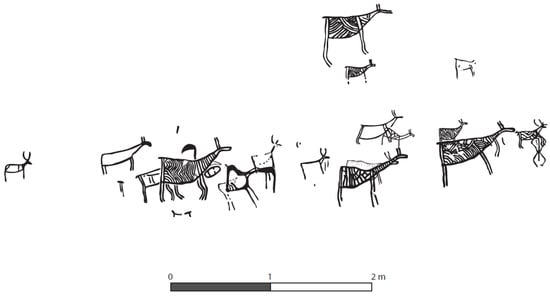
Figure 1
Highly Accessed Articles
Latest Books
E-Mail Alert
News
Topics
Topic in
Arts, Genealogy, Histories, Philosophies, Religions
Reimagining Totemism: Mystical Experience, Life Values, and Contemporary Art Practices
Topic Editors: Zhilong Yan, Lidija Stojanović, Aixin ZhangDeadline: 31 October 2026

Special Issues
Special Issue in
Arts
Contemporary Visual Culture in Conflict Zones and Contested Territories
Guest Editor: Ronit MilanoDeadline: 15 November 2025
Special Issue in
Arts
Active Women in the Art Market: 1950–2020. Mapping Gallerists, Collectors, Maecenas, Auctioneers, Curators in Emerging Markets
Guest Editors: Adelaide Duarte, Marta Pérez-IbáñezDeadline: 15 November 2025
Special Issue in
Arts
Aesthetics in Contemporary Cities
Guest Editors: Maciej Lasocki, Martina Koll-Schretzenmayr, Antonella Contin, Claudia Westermann, Aura Luciana Istrate, Álvaro Clua UcedaDeadline: 30 November 2025
Special Issue in
Arts
Renaissance Rhapsody: Miscellany and Multimodality in Early Modern Europe
Guest Editor: Catharine IngersollDeadline: 30 November 2025


